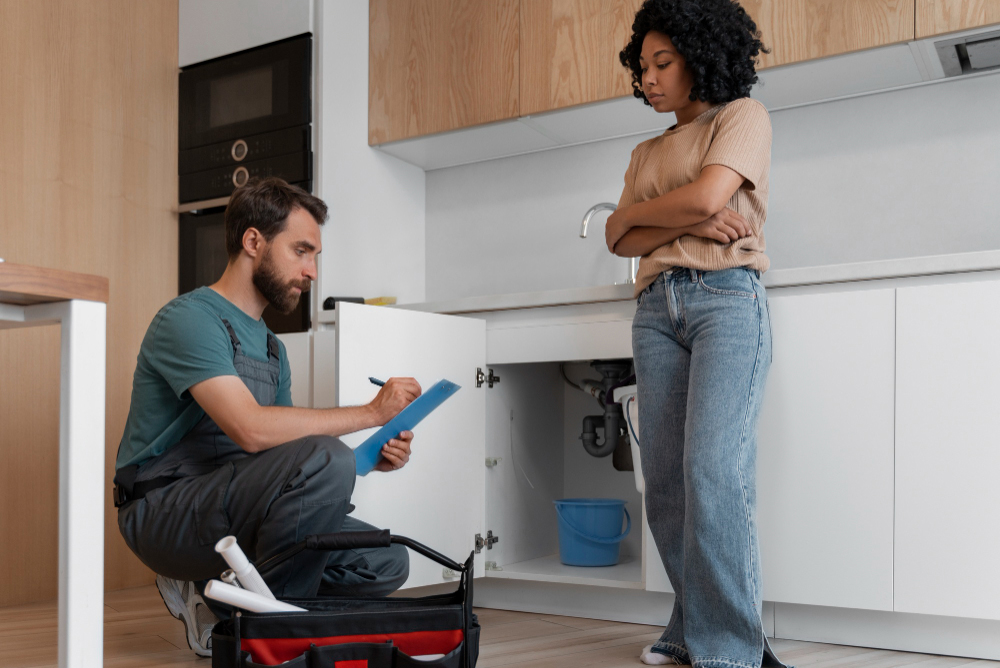

Moving into a new apartment brings excitement and fresh possibilities. Along with settling into your new space, understanding how maintenance works can help you feel confident and prepared as a tenant. Whether you're searching for apartments for rent in Wilson, NC, or already calling one home, knowing the maintenance request process ensures you can keep your living space comfortable and well-maintained.
Apartment maintenance isn't something to worry about—it's actually one of the great benefits of renting. Unlike homeownership, you have a dedicated team ready to handle repairs and upkeep, often at no additional cost to you. Let's explore how this system works and how you can make the most of it.
Before diving into the request process, it's helpful to understand what maintenance typically covers. Most apartment communities handle major systems like plumbing, electrical work, heating and cooling, and structural issues. They also maintain common areas, exterior building maintenance, and major appliances that come with your unit.
As a tenant, you're generally responsible for keeping your apartment clean, replacing light bulbs, changing air filters (though some communities handle this), and reporting issues promptly. Understanding this division helps set realistic expectations and ensures smooth communication with your maintenance team.
Step 1: Identify the Issue
The first step involves assessing the situation. Is this an emergency that needs immediate attention, or can it wait for regular business hours? Emergency situations typically include water leaks, electrical hazards, heating failures during winter, or security concerns like broken locks.
For non-emergency issues like a dripping faucet, a burnt-out light fixture, or a cabinet door that won't close properly, you can follow the standard request process during normal hours.
Step 2: Submit Your Request
Most modern apartment communities offer multiple ways to submit maintenance requests. Many provide online portals through their websites or mobile apps, making it convenient to report issues anytime. You can usually upload photos, which helps maintenance staff understand the problem before they arrive.
Phone calls remain another reliable option, especially for urgent matters. When calling, be prepared to provide your name, apartment number, contact information, and a clear description of the problem.
Some communities still accept written requests, though this method is becoming less common due to the speed and convenience of digital options.
Step 3: Provide Clear Details
Whether submitting online or calling, clear communication makes the process smoother for everyone. Describe the location of the problem specifically—instead of saying "the bathroom faucet is broken," try "the cold water handle on the bathroom sink won't turn off completely."
If you've noticed when the problem occurs most often or what might have triggered it, include those details. Photos can be incredibly helpful for issues like stains, cracks, or appliance malfunctions.
Once your request is received, the property management team reviews it and determines the priority level. Emergency requests typically receive immediate attention, often within hours. Non-emergency issues are usually addressed within 24-48 hours, though some minor cosmetic issues might take longer depending on the community's schedule and staffing.
You should receive confirmation that your request was received, along with an expected timeframe for completion. Many communities provide updates if delays occur or if additional time is needed.
The maintenance team will contact you to schedule a convenient time for access to your apartment. Most communities require 24-hours notice before entering your unit, except in genuine emergencies.
Before the maintenance team arrives, secure any valuable items and ensure pets are safely contained. While maintenance staff are professionals, taking these precautions provides peace of mind.
Clear the area around the problem if possible. If your dishwasher isn't working, remove dishes and personal items from nearby counters. This helps the technician work efficiently and protects your belongings.
If you have specific concerns or additional information about the problem, write them down. Sometimes issues become more apparent once repair work begins.
Understanding the difference between emergency and routine maintenance helps ensure appropriate response times and resource allocation.
Emergency Situations Include:
Routine Maintenance Includes:
Most maintenance requests are completed promptly and to your satisfaction. However, if you experience delays or the issue isn't fully resolved, don't hesitate to follow up with the property management office.
When following up, reference your original request number if you have one, and provide any new information about the problem. Sometimes issues are more complex than initially apparent, requiring multiple visits or specialized parts.
If you're satisfied with the work, consider providing positive feedback. Many communities appreciate hearing when their maintenance teams do excellent work, and this recognition helps maintain high service standards.
Treating maintenance staff with respect and appreciation goes a long way toward ensuring excellent service. These professionals work hard to keep your living environment comfortable and safe.
Being present during repairs when possible allows you to ask questions and better understand your apartment's systems. This knowledge can help you identify future issues early and perform basic troubleshooting when appropriate.
Understanding how maintenance works can actually help you evaluate apartments during your search. When touring potential homes, ask about their maintenance request process, typical response times, and what's covered under regular maintenance.
Properties with well-organized maintenance systems often indicate overall good management and attention to tenant satisfaction. This attention to detail usually extends to other aspects of the living experience as well.
Learning about apartment maintenance helps you feel more confident and prepared as a tenant. The process is designed to be straightforward and responsive to your needs, ensuring your living space remains comfortable and well-maintained.
If you're looking for apartments for rent in Wilson, NC, contact Oasis at Heritage today to schedule a personal tour. Their professional team can walk you through their maintenance process and answer any questions about living in their community. You'll discover firsthand how a well-managed property makes apartment living both convenient and enjoyable.